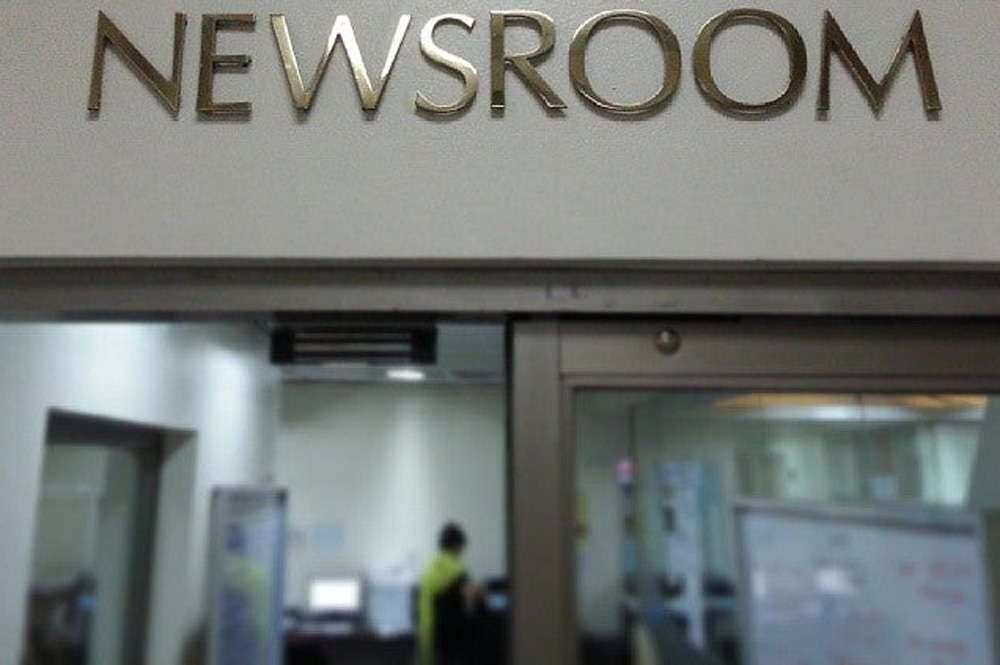
How To (Actually) Change A TV Newsroom Culture


Sean McLaughlin
One can spot it in an instance in any editorial meeting in any newsroom. Are employees invested and interested, or bored and checked out? Are just a couple of voices dominating the meeting, or is it an active discussion of impassioned ideas and approaches? Is the atmosphere one of high energy, or phone checking and nodding off? Some newsrooms and stations are productive, functional and healthy, but many others have taken on signs of serious operational illness, and companies know it.
Culture has become an obsession in the local media industry, and rightfully so. Employees aren’t happy and they aren’t shy about expressing it, often by mentally checking out or even leaving a station or the industry altogether. Many companies have invested significantly in surveys, internal research and other tools to better understand what’s happening. There are a handful of issues driving this collective unhappiness, none of them will go away easily, and they seem similar across the industry.
We have to be honest with ourselves up front. At a time of rapid change and constant revenue pressure, achieving a happy workplace is a tall task. Every 2.5% merit increase or frozen open position comes with negative baggage that reverberates through an organization, especially at a time when we are asking people to do more and to do it differently. But a few little things can go a long way in helping turn the tide.
Be brutally honest. Too many employees lack understanding of the current state of the broadcast business and the trends of linear viewership. Company leaders often try to put a pleasant face on ugly facts. When employees don’t understand the reality, it’s hard for them to understand the consequences they experience on the job. My experience has been people are more interested in the math, the trends and the projections than their bosses give them credit for.
When budgets continue to be cut, jobs frozen and eliminated, telling people, for example, that a position is “on-hold” until revenue turns around can be seen by many as disingenuous. As we’ve seen over the past few years, often these positions never come back. Proclamations such as “the cuts are now over” or “no newsroom employees will be affected,” only for employees to see firsthand later that those claims weren’t true, breaches trust. This is very damaging and very hard to repair. I don’t know how any media executive can make these kinds of claims for the foreseeable future. We all want to be aspirational, but aspiration is a terrible business plan. Bring employees in on the realities of our business and always shoot straight, even when the truth is hard or scary. If nothing else, they’ll respect the candor and transparency, which counts for a lot.
Provide consistent messaging from corporate and local leaders. When the company and the local leadership aren’t aligned, it is immediately clear to employees and the impact on culture can be dramatic. I worked for a gifted leader when I was news director in St. Louis during the great recession. We had to make horribly challenging decisions regarding costs and people, and they seemed never ending. From this GM, I never once heard “Well, here’s the latest brilliant idea from corporate.” Honestly, I never knew.
Clearly, there were hard decisions made at the corporate level and they tied to local decisions, but as the leader of the largest department in the building, all I saw from my boss was “here’s what we are going to do.” Every idea was presented and owned as if it was his, even though some were obviously coming from higher up the food chain. This demonstration of leadership made tough truths easier to handle, and he led us though the toughest economic situation I encountered in my 15 years running local newsrooms. There was no “us and them,” just the collective “us.” There’s a time for debate and airing of grievances between corporate and local leaders, but by the time it reaches the staff level, there can only be one united voice, or the culture will suffer.
Communicate and listen. As much as local and corporate leaders think they’re communicating and hearing from their workforce, employees repeatedly say it falls short. GMs and NDs need to be constantly visible and accessible. When there is a game plan, a change in operation or expense focus that people are going to see and feel, they need to hear it from their local leadership. There also needs to be frequent talk about why.
One thing I learned in my leadership roles is that different people process at different speeds, and you need to account for this in your communication plan. Identify the influencers in your building and spend extra time understanding what they are experiencing and hearing from others. Find those people who aren’t saying anything and engage in conversation. You win people over one by one during these periods through the work of true leadership. Absent hearing from you, the negative naysayers become the dominant voice in the room, and you lose control of the culture.
Call out and reward good work. If we are asking people to do something differently, we need to constantly be on the lookout for people who take meaningful steps forward. Start every meeting by showing one example of a step in the right direction, big or small. It will make the employee who did the work feel great and allow others to see what success looks like. Three minutes a day devoted to this can generate a lot of positivity in your building. A quick “atta boy” text or email also goes a long way in a feedback-starved work environment.
Lead by example. Everyone pays attention to what his or her bosses do. If there’s a big focus on expenses, hearing about big corporate meetings, fancy dinners or executives who insist on flying only first class makes employees question fairness. Many executives are surprised how fast these stories get around and the damage they create. Conversely, when they see consistency in everyone working together to watch the dime, it’s easier to get on board. The same goes with changes in approach. “Here’s what I need from you” followed by “and here’s what I’m going to do differently” can be motivating.
Be accountable. Some people can’t or won’t be able to do it. At all levels of an organization, this must be planned for. These people undermine efforts at transformation every day and can quickly drag a positive culture into the dirt. It is the job of station leadership to spot these people and take action to fix the situation. Sometimes it is a matter of training, and sometimes they need to go. Poor performing employees are visible to their colleagues and it reflects poorly on the leaders whose job it is to ensure operational effectiveness. Too many station leaders shy away from holding people accountable, and it’s a culture killer.
When the culture stinks, there is a lot of finger-pointing and blame to go around. As leaders, we owe it to our teams to take a more focused and empathetic approach and a larger commitment to honest conversation and accountability. We need to be transparent communicators committed to elevating the buy-in and the skill sets of our workforce. What we are doing is hard and we cannot do it unless we have the best employees and have them fully on board and engaged.
Sean McLaughlin is vice president of news for Graham Media Group’s local media hubs.
























Comments (2)
timeshavechanged says:
April 19, 2024 at 10:18 am
We have all had a front-row seat to watch him destroy newsroom culture and an entire company’s culture, so this should be interesting at Graham.
Mike Snyder says:
April 19, 2024 at 3:43 pm
Thank you Sean for articulating the truth of the situation facing newsrooms. Depending upon your perspective, the broadcast news business is either in a rapid unrecoverable nose dive or a transformational metamorphosis loaded with opportunities for the brave. Either way, the state of the broadcast news business is precarious, its survival depends upon those still engaged in the craft becoming entrepreneurial, pushing the envelope of change. What change you ask? Everything; experiment with everything from how raw news material is collected, cataloged, written, edited, produced, and ultimately broadest, streamed, or offered up on digital platforms. We must reconsider the job description of for a reporter, photographer, editor, producer, and anchor. We must even consider if a presenter is necessary since Channel1.AI has demonstrated the ability to synthesize an anchor to present human-generated material. These are troubling times for those watching their newsrooms implode without any real vision from their companies of what’s next. What’s next? It is what we invent, test, and prove to an audience it is worth watching. However, the 800-pound gorilla in the room is how to pay for it all. If the equation of how to morph news production into a more economic model does not include the critical element of how to monetize it, the discussion becomes moot because of one simple truth: no pay, no way. A lot of smart people have their thinking caps on at this moment trying to figure this out. Let’s hope their companies are willing to put their experiments to the test.